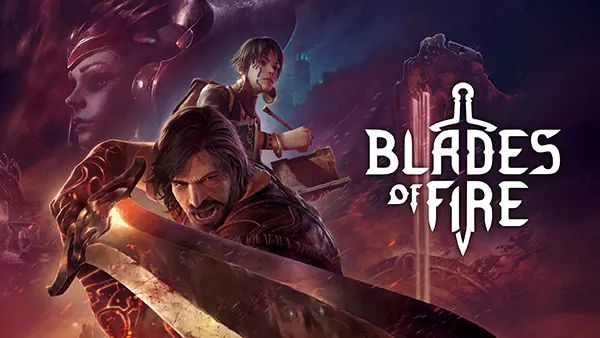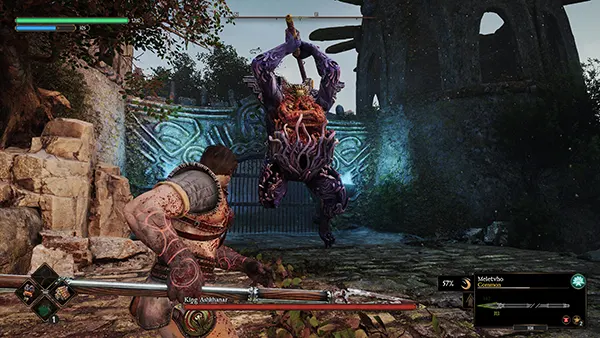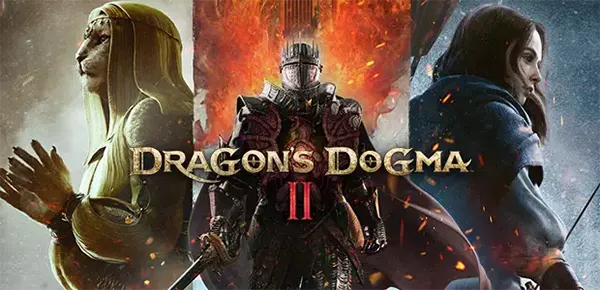
Blades of Fire on PC — a dark fantasy odyssey with mixed reception: analysis and perspectives
Released in May 2025 by Spanish developer MercurySteam, Blades of Fire on PC has quickly become one of the most debated dark fantasy action RPGs of recent years. Combining the intensity of real-time combat with deep forging mechanics, it promised a unique experience in a world corrupted by flame and despair. Yet, despite its ambitious scope, the game has received mixed reviews, with some praising its artistry and others criticising its execution. Let’s take a closer look at how this ambitious project performs in practice and what future it may hold.
Combat and weapon-forging mechanics
The defining element of Blades of Fire is its weapon-forging system. Every strike, block and parry affects the durability of your weapon, forcing players to think strategically rather than recklessly. Instead of traditional levelling, strength comes from mastering the forge — heating, shaping and tempering blades to adapt to new threats. This mechanic offers refreshing complexity that rewards patience and skill.
Combat itself is designed to feel weighty and deliberate. Each enemy type demands a different rhythm — agile opponents require quick dodges and lighter blades, while heavily armoured beasts crumble only under precisely timed counterattacks. This emphasis on tactical precision keeps the experience grounded and immersive, giving players a real sense of progress through discipline rather than grinding.
However, this intensity comes at a cost. The constant weapon maintenance can slow down exploration, particularly during longer quests where resources to repair equipment are scarce. Many players argue that the balance between realism and enjoyment could be better tuned, as prolonged resource management sometimes interrupts the flow of the adventure.
The challenge of maintaining balance
MercurySteam’s decision to implement a durability system adds both depth and tension to combat. It creates a sense of vulnerability — weapons break, mistakes matter, and preparation becomes crucial. Yet the system occasionally feels punishing, especially for newcomers who underestimate how fragile early-game tools can be. A more gradual difficulty curve could make the learning process less frustrating.
Developers have hinted at upcoming patches aimed at fine-tuning durability thresholds and material drop rates. This suggests they are listening to community feedback and trying to make the experience fairer without compromising its challenge. Given the studio’s track record with post-launch improvements, there is reason to expect meaningful evolution.
Ultimately, the durability mechanic defines the game’s identity. While divisive, it reinforces the idea that survival in the world of Blades of Fire depends not only on strength but also on wisdom and adaptability — key themes in its lore and design philosophy.
Storytelling and artistic direction
Blades of Fire unfolds in the ruined kingdom of Calthera, a land where gods once forged the first weapons and mortals dared to steal their fire. The narrative follows Aran de Lira, a blacksmith’s apprentice turned reluctant hero, as he uncovers the truth behind a celestial rebellion that scorched the world. Through environmental storytelling and cryptic dialogue, the game builds a mythos that feels rich, ancient and tragic.
Visually, the title is stunning. MercurySteam’s artists have crafted gothic cities lit by molten rivers and ash-filled skies that seem to breathe despair. The lighting engine, powered by Unreal 5, gives each area a cinematic tone. The haunting score by composer Maria Ortega adds emotional depth, shifting from soft choral laments to thunderous orchestral movements during major battles.
While the worldbuilding is exceptional, the pacing of the narrative often divides critics. Some feel that the plot reveals key mysteries too slowly, burying important story beats under layers of cryptic dialogue. Others argue that this ambiguity enhances the dark fantasy tone, inviting players to piece together the lore themselves. It’s a creative risk that will appeal to some but alienate others.
Voice acting and emotional resonance
The English voice cast delivers strong performances, especially in portraying Aran’s moral conflict between revenge and redemption. Secondary characters, such as the enigmatic prophet Elaris and the forge spirit Nimir, offer compelling emotional counterpoints that expand the story beyond its central quest. Their interactions lend human warmth to an otherwise bleak world.
However, inconsistent lip-syncing and occasional sound-mixing issues break immersion during crucial scenes. The developers have acknowledged these flaws and promised updates to improve dialogue timing and ambient effects. If corrected, these changes could elevate the storytelling to a new level of quality.
Despite technical imperfections, the narrative remains one of Blades of Fire’s strongest achievements. It combines mythological depth with human vulnerability, offering a story that lingers long after the credits roll.

Reception, performance and future prospects
Upon release, Blades of Fire achieved an average critic score of 74 % on Metacritic. Reviewers praised its visual design, atmospheric soundtrack and complex combat, while pointing out issues with pacing, performance and optimisation on mid-range PCs. Patch 1.03 addressed several memory-leak and frame-rate issues, but some players continue to report minor stuttering in high-density environments.
Community reaction has been more forgiving than critical consensus. Fans appreciate MercurySteam’s willingness to experiment and support the title post-launch. Modding communities have also started to enhance the experience by introducing new weapon blueprints and difficulty modifiers, proving that the game’s core concept resonates with dedicated players.
Looking ahead, insiders suggest that MercurySteam may expand Blades of Fire through an upcoming DLC titled Echoes of the Emberforge. Expected in late 2025, it could address narrative gaps and introduce new regions set in the volcanic north. If executed well, this expansion might transform the game from a niche favourite into a widely respected entry in the dark fantasy genre.
Long-term impact on the genre
Blades of Fire demonstrates how smaller studios can push boundaries by rethinking established mechanics. Its approach to weapon crafting and player vulnerability challenges the dominance of purely power-based progression systems found in mainstream RPGs. This could inspire future developers to design experiences that value skill and decision-making over statistics alone.
The game also serves as a reminder that technical ambition must align with accessibility. A rich world and intricate combat system can only thrive when supported by balanced difficulty and stable performance. As MercurySteam continues refining its work, the lessons learned from this release may influence the next generation of action RPGs.
In the end, Blades of Fire is imperfect but bold — a flawed gem whose fire continues to burn through the dedication of its creators and community alike.



